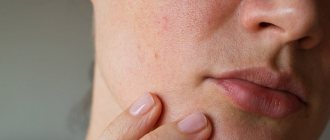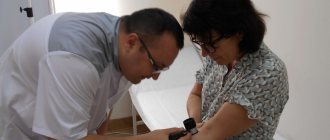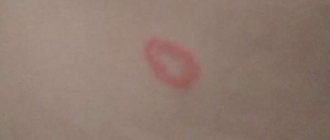If milia appear on the skin, it takes on a sloppy appearance. The owner experiences stress, is embarrassed to appear in public and attracts the gaze of other people. Millet is an unpleasant cosmetic defect. This name was given due to the presence of dirty yellow or white formations that resemble millet in appearance.
Milium refers to the presence of whiteheads , which appear when the sebaceous glands or hair follicle are blocked by horny masses. Due to the presence of closed pores, a white head appears on the surface of the skin. At the same time, there are no inflammatory processes or redness on the epidermis. It is difficult to get rid of this problem, but every person should take care of eliminating the spots on their face.
Causes of occurrence in adults
- For liver diseases.
- Skin burning in the sun.
- Disruptions in the body's hormonal system.
- Clogged pores when applying cosmetics.
- Cigarettes.
- Alcohol.
- Poor nutrition.
- Genetic predisposition.
- Avitaminosis.
- Failure of metabolism in the human body.
- Diseases of the stomach and intestines.
- Problems with the pancreas.
- Incorrectly selected facial skin care.
- Due to frequent visits to the solarium.
- Physical trauma to the skin.
- Long-term use of medications.
- Use of low quality cosmetics and expired cosmetics.
Procedures and operations
The most common procedure for removing millet grass is the mechanical method. First, the skin is treated with an antiseptic. Then the specialist uses a sterile needle, opens the membrane, lifts the cyst and pushes it out. For this purpose, a special curette that resembles a spoon is also used. This tool makes it possible to completely scrape out the milia, and then the remnants of its contents will not turn into a cyst again after some time. In one procedure, a certain number of formations are removed – no more than 10.
Milia under the eyes are removed using radio waves , and diamond cleaning . A more aggressive method is burning ( laser removal, electrocoagulation ), which acts on the formations in a targeted manner.
Sometimes milia disappear on their own after a few months as the skin renews itself.
It is also important to ensure proper skin care and use products that will help normalize the oiliness of the epidermis.
The appearance of milia in newborns
Milia in newborns is not a disease; they appear due to the immaturity of the sebaceous glands. Half of babies are affected by this problem. Milia in babies is completely painless. They appear in babies on the forehead, around the nose and mouth, and less often on the body. They go away on their own within 2 months.
Milia in newborns. Photo
Kinds
Experts distinguish two groups of rashes:
- Primary , which are the result of spontaneous formation or exposure to ultraviolet rays.
- Secondary , appearing after skin damage of an inflammatory or mechanical nature.
For a long time they do not change in size and do not cause discomfort to the patient, but sometimes they open spontaneously.
A small scar remains on the exposed area. But, if an infection gets into the milium, then an abscess can form from it.
Do milia need to be removed or will they go away on their own?
Milia do not go away on their own. It is not recommended to squeeze out milia with your hands, so as not to damage the hair follicles and sebaceous glands. If you squeeze out the milia manually, the damaged area of skin may become inflamed and infected. It is also possible for a more voluminous acne to form or a scar to appear on the injured area.
To remove milia on the face, it is recommended to use only proven methods:
- Mechanically by a specialist.
- Electrocoagulation.
- Laser removal.
- Medical removal.
- Removal using traditional methods.
Tests and diagnostics
A dermatologist diagnoses milia by examining the skin and identifying characteristic signs. The doctor interviews the patient, studies the medical history and collects anamnesis to determine the cause that triggered the development of millet.
Instrumental and laboratory studies, as a rule, are not practiced. If milia appear against the background of other diseases, the patient is advised to consult with specialists.
It is important to differentiate milia from fibrofolliculoma , trichodiscoma , fibroma , syringoma and xanthelasma .
How to get rid of milia on the face at home
There are several ways to get rid of milia on your face at home:
- Treatment of milia with peeling. To prepare the peeling you need to take:
- 20 g finely ground salt (preferably sea salt).
- Mix with 20 g of sour cream.
Mask with salt and sour cream
If the skin on your face is dry, you should use olive oil instead of sour cream to prepare the peeling. With the prepared peeling, carefully treat areas of skin with milia. Then leave it on your face as a mask for 5 minutes, then rinse off the peeling with running water.
- Milia on the face - how to get rid of them with baking soda. This method is only suitable for skin with excessive sebum production. 10 g of soda with 10 g of liquid soap. Rub the areas of skin where milia are located several times. After the procedure, rinse off any remaining scrub with running water. Redness after the procedure will disappear within 48 hours.
- Herbal compresses. A compress using dry chamomile and dry calendula has no contraindications. If you use compresses daily, the treatment of milia will be much faster. Herbs alternate with each other. Compresses soothe and disinfect the skin. To prepare 1 tbsp. l. Boil dried herbs in 1 tbsp. water for 10 minutes. Dip a piece of cotton wool into the warm broth and apply a compress over the entire face. Before use, the face should be cleansed with lotion. Next, steam your face with a hot towel. Then apply a compress and keep the compress on your face for 15 minutes.
- Mask with viburnum. In order to prepare a mask with viburnum you need to take:
- 2 tbsp. l. Grind the berries in a blender.
- Mix with 1 tbsp. l. Hercules porridge (it must first be ground into flour).
Mask with viburnum
Before use, clean the skin and steam with a hot towel. Apply to facial skin, avoiding the area around the eyes. After 15 minutes, remove the residue with a cotton sponge.
- Yeast mask. Used for skin with increased secretion of the sebaceous glands. To prepare it you will need the following ingredients:
- 10 g dry yeast.
- 10 g hydrogen peroxide.
- 1 tbsp. l. natural bee honey.
- Juice of ¼ lemon.
Before use, mix everything and let it brew in a warm place for 40 minutes. Before use, it is necessary to cleanse the skin of the face, avoiding the area around the eyes with lotion. Then apply the mask for 15 minutes. This mask restores the natural functions of the sebaceous glands and lightens age spots.
- Pumpkin mask. To prepare a pumpkin mask you need:
- 2 tbsp. l. grated pumpkin.
- Mix with 10 g of sour cream with high fat content.
Pumpkin mask
Then apply to cleansed face, avoiding the area around the eyes for 15 minutes. A pumpkin-based mask is used to improve metabolism in the dermis.
- Paraffin mask. To prepare this mask you need to take 75 g of white paraffin (the paraffin must be melted before use). Before starting the procedure, it is important to cleanse your face exclusively with alcohol tonic. Using a brush, carefully apply up to 20 layers of the prepared mask to the affected areas. Carefully remove the cooled mask from your face. Apply hypoallergenic cream to your face.
How to remove milia yourself: step-by-step instructions
- It is necessary to disinfect your hands and needle before starting the procedure.
- Cleanse your face and steam with a hot towel for 10 minutes.
- Use a needle to carefully pierce the milium.
- Try to remove it completely, including the small bag. If the part remains the milia will appear again.
- After removing milia with clean hands, apply a restorative mask to your face. To do this you need to mix:
- 25 g wet yeast;
- Juice of ½ lemon;
- 10 g hydrogen peroxide;
- 10 g liquid honey;
- Apply the resulting composition to the skin affected by milia for half an hour.
- Rinse with water and treat skin with lotion.
- In order to prevent the reappearance of milia, it is necessary to regularly apply a facial scrub. To prepare the scrub you need to take:
- 100 g oat flour;
- 10 g soda;
- 10 g fine salt;
- 20 g neutral liquid soap;
- Apply scrub 2 rubles. per week, apply to wet face, massage for 2 minutes. After use, rinse with water.
What are milia?
A small formation in the place where hair begins to grow is called millet. These are dense nodules that are localized mainly on the face in areas with thin skin. They are painless, not prone to growth and inflammation. Their diameter ranges from 0.5 to 3 mm. Rarely, milia can appear on the body or in the groin area. Age category - any, but most often millet is observed in women, newborns and adolescents.
Exocrine glands are located in the dermis, their ducts are often directed to the mouth of the root part of the hair. Each of them secretes sebum, a fatty substance that is a lipid complex.
When released onto the surface of the dermis, the secretion forms a special invisible film, which consists of water and lipids, and is intended for protective functions. In addition, dead epidermal cells are shed through the base of the follicle. When the gland becomes clogged with sebum and horny scales, milia are formed. The formation is called millet because of its similarity to millet grain and its color (white, yellowish).
Recipes for peelings, masks and scrubs
Milia on the face - how to get rid of it with the help of a golden mustache. Grind the leaves of the plant to make 2 tbsp. Apply to steamed facial skin (to steam, apply a hot towel to your face for 10 minutes).
Secure with gauze bandage. Leave it overnight until the morning. In the morning, remove the remnants of the mask with a cotton sponge, then wipe the skin with lotion. Apply 1 r. in Week.
To prepare the mask, you should use freshly cut leaves of the plant.
To prepare a honey-protein mask you will need:
- 1 protein;
- 10 g liquid honey;
Beat the egg whites with a whisk and mix with honey. Keep this mask on your face for 10 minutes. After use, rinse with running water.
Garlic mask. To prepare a mask with garlic, you will need to crush and chop 3 cloves of garlic, add 1 tbsp. l. natural vegetable oil. Rub the resulting mask into the affected areas of the facial skin 3 rubles. in a day.
To prepare a cucumber mask you need to take:
- Grated cucumber (pre-filled with boiling water and left for 2 hours).
- Fabric mask according to the shape of the face.
Dip the mask into the solution. Apply to face for half an hour. If the mask dries out, then periodically it must be dipped in a cooled cucumber solution. Apply up to 3 r. week.
Cucumber mask
To prepare coffee-based peeling you will need:
- 1 tbsp. l. steamed natural coffee.
- 1 tbsp. l. foam for washing.
Mix and wipe face in circular motions. After the procedure, rinse your face with running water. Use no more than 3 times. in Week.
To prepare the peeling you need to take:
- 1 tbsp. l. salt.
- 1 tbsp. l. soda
- 1 tbsp. l. neutral soap.
Mix everything, use 2 r. in Week. Then rinse off any remaining peeling and apply a neutral moisturizer to your face.
Electrocoagulation
Milia on the face - how to get rid of it using electrocoagulation. It works in such a way that it acts with electric current on each milium pointwise. After removing the milia in this way, a crust forms in its place. You cannot remove it yourself so as not to leave a scar.
Carrying out electrocoagulation of milia
This method is suitable for milia of any size. The duration of the cosmetic procedure is up to half an hour. In especially rare and advanced cases, you need to repeat the procedure after 30 days.
The electrocoagulation procedure is carried out exclusively in a beauty salon. The skin is pre-cleaned before the procedure. Then they apply electric current to the affected areas. Impact on one milium from 5 s to 60 s.
After removing milia using electrocoagulation, a crust forms at the site of each whitehead, which separates on its own after 7-8 days, leaving no marks on the skin of the face.
The undoubted advantages of electrocoagulation are that the effect is made directly on the problem area, the skin that is located nearby is not damaged. This procedure makes it possible to remove even the deepest and oldest milia.
After removing milia, you need to treat the skin with lotion until the crust peels off. When using this procedure, local anesthesia is administered.
Pathogenesis
Another name for this manifestation is retention miliary cysts . In the process of chemical analysis of the contents of milia, it was determined that it contains keratin - dead cells mixed with fat. Their structure is dense, not similar to the contents of acne , since they contain relatively little sebum. These formations are small - their diameter is no more than 2 mm. The milia capsule is located separately from the sweat and fat ducts. The formations are localized mainly on the cheekbones, eyelids, temples, forehead, and near the lips. They rarely form on the chin. Milium has a cystic structure, and there are no passages outward, so it is difficult to squeeze out the formation.
Such acne forms due to specific processes. Apoptosis is the process by which damaged, overproduced and old cells in the body are eliminated. But sometimes apoptosis is disrupted, which leads to the development of a number of skin diseases, including the formation of milia.
The surface of the skin is renewed every 2-4 weeks. However, this process is correct and timely only when a sufficient level of cell apoptosis occurs in the skin and the intercellular substance is renewed in a timely manner. The intercellular substance consists of collagen and elastin . In the intercellular space, elastin and collagen fibers are removed by fibroblasts - special cells. But if their activity is insufficient, then the old fibers are not removed, but become denser and close the cell, preventing the entry of necessary substances into it and the removal of metabolic products. As a result, keratinocytes die, but they are not removed. Dead cells remain in the skin, surrounded by a sheath of connective tissue. As a result, milia appear. It is impossible to remove these formations using acne treatment products.
This type of formation also sometimes occurs in newborns. During the period of intrauterine development of the fetus, sebaceous glands are formed already in the third month. The impact of a number of factors on the body of the expectant mother leads to the development of milia in newborns. As a rule, after some time their number becomes smaller and they disappear on their own.
Laser removal
Laser removal of tumors is one of the safest methods. The effect on facial skin is absolutely safe. When exposed to laser, areas of the skin located in close proximity to the milia are not affected. Infection and inflammation of the treated area are also excluded, since contact with the skin is excluded.
Removing white pimples with Lazar
After the laser procedure, a dry brown crust remains on the affected area. It will peel off on its own within 10 days; removing it yourself until the wound heals is strictly prohibited. The wound healing period is up to 14 days.
After the keratinized crust peels off, the skin evens out the color, and after a month it is impossible to find the place where the milia was. The laser is most effective for extensive facial skin lesions. Carbon dioxide laser is used to remove deep milia. After using the laser there is no bleeding from wounds.
Cryotherapy
When cryotherapy is used to treat milia, controlled destruction of the milia occurs. Cryotherapy treatment of problem areas of the skin occurs due to exposure to low temperatures.
Cryotherapy uses liquid nitrogen to treat milia. When cryo-destruction is used, the removal of milia occurs due to the formation of ice in the affected cell. The lower the temperature of liquid nitrogen, the faster the affected cell is destroyed. Cryotherapy is performed in cycles of freezing and then thawing the milia. Between cycles the period is from 1 to 5 minutes.
Removing white pimples on the face with cryotherapy
Cryotherapy has a short preparation and treatment time. The advantage of its use is the low risk of infection of damaged tissues. After the cryo removal procedure, there is no need to care for the wound. The procedure is performed without local anesthesia. There are no scars or scars left.
Side effects of cryotherapy:
- Minimal bleeding may occur.
- Blisters may form at the site of the removed milia.
- Hyperpigmentation around the affected area.
- Scars at the site of milia removal.
Types of cryotherapy:
- Method of applying liquid nitrogen using a special spatula. This method is rarely used due to the inability to control the temperature, area of application and area of penetration of liquid nitrogen.
- Spraying liquid nitrogen immediately onto the entire affected area of the skin. Suitable for extensive skin lesions with milia.
- Cryo probes are used to treat milia around the eyes and on the eyelids. The cryo probe is in direct contact with the skin and precisely removes the affected areas without damaging the surrounding skin.
The time and depth of freezing of the affected skin area depends on the size and depth of the milia.
Treatment price
The only quick and effective treatment for milia is their removal. The most popular methods offered by cosmetologists are laser and electrocoagulation. To do this, you need to make an appointment with a specialist - a cosmetologist or dermatologist.
On average, an initial outpatient appointment will cost 1300–1500 rubles. in Moscow. After the doctor decides on the method of removal, the patient is offered an anesthetic injection - from 500 rubles. Next comes the removal process itself.
The price (per unit) will depend on the size of the milia and their quantity. It should also be taken into account that laser removal is more expensive than electrocoagulation.
If you only have to get rid of one whitehead, the patient will have to pay from 300 rubles. for the laser method and 200 rubles. for electrocoagulation.
If you need to clear your face of whiteheads, of which there are more than 10 pieces, you will have to pay from 600 rubles per piece. (laser) and from 400 rub./piece. for the electrical method. Mechanical removal is used less and less. The price for it ranges from 70 to 100 rubles. for a unit.
After removal of miliary cysts, as well as to prevent their reappearance, the patient needs to take care of the condition of the skin. To do this, you should use various cosmetics. Their prices depend on the manufacturer, the quality of raw materials, and packaging.
Find out what milia are and how to get rid of them from the video.
Creams and ointments for milia
- To treat the affected area of facial skin, it is necessary to apply Vishnevsky ointment pointwise to each milia. You need to do the procedure at night, apply cotton wool to the ointment and cover it with a band-aid. Apply before the milium opens itself, then it will need to be removed with a curette or a needle treated with alcohol.
- Ichthyol ointment is used if an inflammatory process has formed after its removal. Ichthyol ointment is used daily until inflammation disappears and the wound heals.
- After removing milia mechanically, the drug bodyaga is used. It is used morning and evening until complete healing and exfoliation of the brown crust at the site of the removed milia.
- Benzene peroxide is used very carefully. Applied precisely. If applied past the affected area, a white spot may appear on the skin. It slows down the process of skin exfoliation and thus treats milia.
- Vitamin A retinol is applied precisely to the affected areas of the facial skin and promotes cell renewal. Easily copes with scars and scars after unsuccessful removal of milia.
Consequences and complications
If you deal with this cosmetic problem correctly, there will be no unpleasant consequences. But if there is an unprofessional approach to eliminating the pimples and incorrect actions at home, wounds, bruises, and later scars may remain in place of the pimples.
Infection in the resulting wound can lead to inflammation, abscess and other unpleasant diseases.
The risk of complications when removing milia in the eye area on your own is very high. When an infection occurs, an abscess of the eyelid may develop. There is also a risk of injuring the eyeball when using a needle.
Bacteria entering the eyelid area can lead to them subsequently ending up in the orbital veins, and later in the sinuses of the brain. As a result, sinus thrombosis may develop.
How to remove milia on the eyelid
It is not recommended to remove milia from the eyelid to avoid infection and aggravate the situation. Milia on the eyelid can be removed mechanically in a cosmetologist's office. After preliminary cleansing of the facial skin, milia will be removed using a curette. In this way, the affected areas will be cleaned manually.
Milia on the eyelid
When using electrocoagulation, current is applied to the affected areas. After the procedure, white pimples become covered with a crust, which will peel off on its own after 7 days.
When removing milia on the eyelid with a laser, there is no risk of skin infection. Exposure to rays is non-contact. The most effective method for removing milia on the eyelid is radio wave. With this method of treatment, scars do not remain. Skin infection is impossible.
When should you see a doctor for treatment?
In most cases, millet is harmless and only causes aesthetic inconvenience. Acne forms gradually, without discomfort or inflammation. They can be observed in the form of individual nodules, but more often they are a scattering localized on the eyelids, temples, and in the T-zone. Since the cysts are tightly sealed and have no contact with the environment, they maintain their size. But if the integrity is violated and pathogenic microorganisms enter, inflammation with pustules can develop.
Milium is easily recognized visually by a cosmetologist. But in some cases it needs to be differentiated from fibroma, flat xanthoma, or hamartoma of the eyelids.
Skin care rules after the procedure
To prevent the appearance of new rashes, it is necessary to minimize trauma to the facial skin:
- Do not touch your face with dirty hands.
- Do not squeeze out tumors by hand.
- All manipulations with the skin should be carried out with previously disinfected hands and tools.
- Use scrubs and peelings no more than 3 times a week.
Always remove dead skin cells from your facial skin in a timely manner:
- Use 1 rub. scrub with oatmeal per week.
- 1 rub. per week, treat your skin with a scrub based on salt and soda.
- When using a scrub, apply it to the skin not with your hands, but with a special sponge.
- Remove dead cells using circular movements along the facial lines.
It is necessary to normalize the fat content of the epidermis:
- You should choose facial care products that are low in lipids and alcohol.
- Creams, gels and serums for the face should be for oily or combination skin.
- Gel and foam for washing must be correctly selected.
- Do not rub your face with a washcloth.
- Washing with soap and hot water is prohibited.
- 1 rub. per week you need to use salicylic peeling.
- Use face cream with UV filters for a whole year.
- The use of foundation on the face should be reduced to a minimum.
- Face powder should be natural, containing minerals. Homemade face masks should be used no more than 2 times a week.
- 1 rub. Use a blue or white clay mask per week.
- 1 rub. in 10 days use sea salt lotion. To do this, dilute 1 tbsp. l. sea salt in 2 tbsp. water, dip gauze and apply to face for 10 minutes.
- For the face, it is better to use products with retinol; they effectively renew facial cells.
- 1 – 2 r. visit the sauna per month.
How to prevent milia
- After removing milia, you need to switch to proper nutrition. The following foods should be excluded from the diet:
- Dessert.
- Chocolate.
- Sweets.
- Candy, ice cream.
- Flour and bakery products.
- Sweet baked goods.
- Foods high in salt.
- All types of canned food.
- Fried meat and fish.
- Fried vegetables.
- Marinades and pickles.
Eat more of these foods:
- Porridge.
- Vegetables.
- Fruits.
- Greenery.
- Take proper care of your facial skin and problem areas:
- 2 r. Wash your face with special foams every day.
- 2 -3 r. a day, wipe your face with lotion for problem skin.
- After each wash, apply face cream with retinol.
- Carry out the procedure for removing dead cells. 1-2 r. exfoliate the skin with special scrubs per week.
- If you have problems with the stomach and intestines, it is necessary to undergo treatment, otherwise milia may return again.
- Don't go out in the sun without sunscreen. Always use cream with UV filters in the morning.
- To refuse from bad habits:
- Excessive consumption of alcoholic and low-alcohol drinks.
- Smoking tobacco products.
- It is necessary to lead a healthy lifestyle. Start playing sports.
To get rid of milia on the face forever, doctors recommend boosting your immunity. To do this, you need to take a course of immunomodulators. With good immunity, pathogenic microflora does not multiply, and the return of milia is impossible.











